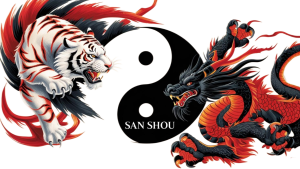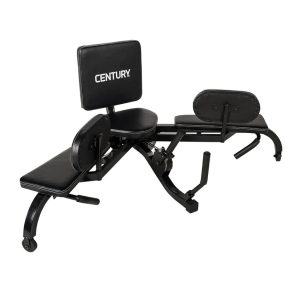Practical: The Most Miss-Defined Term in Martial Arts
The only way they could prove Kung Fu wasn’t practical, was to try to change the definition of the word!
When it comes to martial arts, few words are more more misunderstood—than “practical.”
In the modern Era where MMA schools are everywhere, you will hear lots of critizism for practicing traditional Karate or Kung Fu. The argument is always something similar.
“Traditional martial arts are a wast of time, they aren’t practical.”
“You need MMA, Boxing, Jujitsi, or Judo if you actually want to know how to fight.”
But what if we’ve been defining “practical” all wrong?
Besides even if you train MMA, the techniques you are learning, most likely came from some form of traditional martial art or Kung Fu!
What Does “Practical” Even Mean?
By definition, practical means “useful and effective in real life.”
But here’s the question we should all be asking:
Real life for who?
If you’re in law enforcement or the military, then combat-based training might be essential. Even then, there are plenty of people who go through that training and still have no better than your average fighting skills. For the average person—working a 9-to-5, raising a family, or aging gracefully—physical confrontation generally is not a daily concern.
So if a martial art helps you move better, stay healthy, stay sharp, and live longer… isn’t that more practical?
Which are you more likely to use in your everyday life? That cool flying arm bar the MMA guy taught you? Or the increased range of motion you have from daily stretching?
Traditional Martial Arts Build Real-Life Skills
Here are a few areas where traditional martial arts like Kung Fu, Karate, and Taekwondo offer long-term, real-world value:
-
Hand-Eye Coordination: Great for driving, reaction time, sports, or simply not dropping your phone.
-
Balance & Body Awareness: Especially important as we age—good balance prevents falls and injuries.
-
Focus & Mental Clarity: Training forms (kata, taolu) builds concentration and mindfulness.
-
Flexibility & Injury Prevention: Regular training improves mobility and reduces the risk of everyday injuries.
You Can Practice Traditional Arts for a Lifetime
Here’s something rarely talked about:
Combat sports often have an expiration date.
Styles like MMA, boxing, or Muay Thai rely heavily on sparring, explosive power, and full-contact training. These are intense systems that take a toll on the body. That’s why you rarely see 70-year-old MMA fighters.
But traditional martial arts? They’re built differently.
They emphasize flow, breath, posture, coordination, and internal strength—all things that age with you, not against you.
It’s not uncommon to see Kung Fu, Tai Chi, or Karate practitioners training well into their 80s and 90s. That longevity is practical.
“Combat-Only” Isn’t Always the Most Useful Approach
Modern systems like Krav Maga or Brazilian Jiu-Jitsu are praised for being “reality-based,” but they tend to focus solely on immediate threats—like being attacked in the street.
While this training is undeniably useful, it can overlook the other 99% of life where mental discipline, emotional control, and physical well-being are more important than throwing a punch.
Unfortunately the culture in some of these schools develops undesirable traits. Some MMA schools teach their students to mock other styles or schools, train them to be overconfident, and the fight culture can often lead to health risk.
For example, Jujitsu is great for ground fighting! It can teach you to submit your opponent or get up and get away if you need too! However, most MMA schools won’t tell you some of the hidden risk!
While grappling on the ground, you are in constant contact with your opponent, and can easily cause small abrasion or tears in the skin, which can easily lead to contact of open wounds between fighters! This means that you can actually spread blood-borne diseases through training the art, possibly including a STD related illnesses! Is it really practical to train to win a fight that may never come only to risk catching a life threatening disease? Some might consider that training “impractical”.
So… What Is Martial Arts Practical For?
Instead of asking, “Is this style practical?”
Maybe the better question is: “Practical for what?”
If your goal is to:
-
Stay active and mobile as you age
-
Improve your reaction time and confidence
-
Build discipline and emotional control
-
Train for life, not just self-defense…
Then traditional martial arts might just be the most practical choice of all.
Train for Life, Not Just for Combat
At Arkansas Wushu, we believe martial arts should improve every aspect of your life—not just prepare you for a rare worst-case scenario.
We blend traditional martial arts with modern understanding to help you build:
-
Functional strength
-
Everyday balance and coordination
-
Calm, focused energy that benefits you at work, at home, and in daily life.
- Combat Application! (yes, we still have those too!)
Recommended Gear for Practical Training
🛡️ Looking for reliable training tools that can grow with you?
We recommend Century Martial Arts gear—durable, affordable, and used in our own training sessions and YouTube tutorials.
For some of our Tutorials, check out our YouTube page!
Final Thoughts
Let’s stop defining “practical” by how hard you can hit someone.
Let’s redefine it by how well you live.
Because if martial arts can help you move better, breathe deeper, and live longer—it might just be the most practical thing you ever do.

